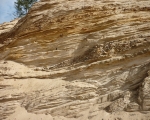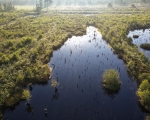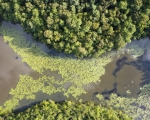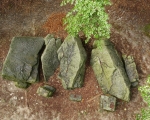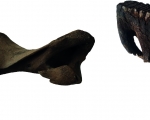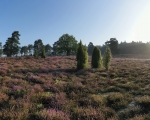Quaternary
Quaternary (2.6 - 0 million years ago)
Even the Teutoburg Forest was covered by an estimated 300 metre-thick ice sheet. About 190,000 years ago, a 35-kilometre-wide glacial tongue cleared out the Artland region and piled up sands, gravels and clays to form the Ankumer Höhen and Dammer Bergen - the second largest extant glacial tongue in the world. The giants of the Ice Age, such as the mammoth or the woolly rhinoceros, also lived here at that time. Their bones and teeth have been found in the gravels of the middle terrace of the river Weser.
Apropos, our rivers such as the Düte, Else, Hase, Hunte Werre and Weser also gradually adopted their present course. The most recent period of the earth's history, the Holocene warm period (since about 12,000 years ago), is characterized by the emergence of the moors and our forests, the megalithic and burial mounds, the Varus Battle and our medieval cultural history. However, the Holocene is still part of the Quaternary Ice Age. How long do you think it will take mankind to finish this age of the earth?
Experience the Quaternary at the Varus Battle Museum Kalkriese, at the Hekese megalithic tomb and at the Plaggeneschzentrum at the Lechtingen Mill.
